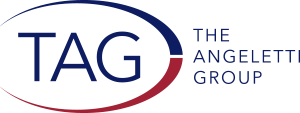By Kevin Ralph
Establishing and expanding grateful patient and physician engagement programs within any healthcare organization requires a strategic approach, a dedicated team, and a data-driven mindset. This comprehensive guide highlights the critical components and stages involved in successfully scaling grateful patient and physician engagement programs, ensuring they achieve their intended impact and sustainability.
A Compelling Case
The foundation of scaling any program starts with presenting a compelling case. This involves clearly defining the program’s purpose, benefits, and the potential impact it can have on the healthcare organization or community. A successful program can account from anywhere from one quarter to one third of a healthcare organization’s development revenue. A well-articulated case will garner the necessary support from stakeholders and attract the resources needed to move forward.
Designated Staff
The staff dedicated to managing the program should include individuals with diverse skills and expertise who are committed to the program’s success. Their roles and responsibilities should be clearly defined to ensure accountability and efficiency. This specialized staff will drive the program’s initiatives, manage day-to-day operations, and adapt strategies as needed. This can be a single person or a team, and can evolve over time as the program expands.
Data Utilization
Data is a powerful tool in scaling programs. By collecting and analyzing relevant data, organizations can make informed decisions, track progress, and measure impact. Data-driven insights help identify areas for improvement, optimize resource allocation, and demonstrate the program’s value to stakeholders.
An Implementation Plan
A robust implementation plan outlines the steps and timelines for scaling the program. It includes detailed strategies for achieving short-term and long-term goals, as well as contingencies for potential challenges. A well-structured plan ensures that all team members are aligned and working towards the same objectives.
Stages of Effective Grateful Patient and Physician Engagement Programs
The process of scaling programs can be categorized into three general stages:
- Startup
- Emerging
- Fully-optimized
Each stage has its unique focus areas and requirements.
Level 1: Startup
In the startup stage, the primary goal is to lay a solid foundation for the program.
This involves:
- Clinician and Leadership Buy-In: Securing the commitment and support of key leaders and clinicians.
- Policies/Compliance: Establishing clear policies and ensuring compliance with HIPAA regulations.
- Data-Analytics and Wealth Screenings: Utilizing data analytics to identify prospects and assess their capacity to give.
- Establishing Giving Vehicles: These can include planned giving and direct response strategies. Engaging donors through diverse platforms increases the likelihood of sustained financial contributions.
Level 2: Emerging
As the program progresses to the emerging stage, the focus shifts to expanding resources and refining strategies:
- Expanded Staffing Resources: Increasing the number of staff members to support growing program activities.
- Establishing Metrics for Gift Officers: Developing data-driven metrics to evaluate the performance of gift officers.
- Expanded Planned Giving Initiative: Broadening the scope of planned giving programs to include more donors as personnel resources expand.
- Enhanced Direct Response Strategies: Improving direct response efforts to increase donor engagement and contributions.
- Affinity and Concierge Programming: Creating personalized engagement programs to build strong relationships with stakeholders.
Level 3: Fully-Optimized
When a program reaches this stage, it aims to achieve full integration and optimization:
- High-Touch Involvement from Executive Leadership: Ensuring active participation and support from top executives.
- Executive Health Initiatives: Implementing health-focused programs led by executive leadership to attract high-level donors.
- Enhanced Affinity and Concierge Programming: Further developing personalized engagement strategies to deepen donor relationships.
- Optimized Major Gift Metrics: Refining metrics to better track and optimize major gift contributions.
- Multi-Channel Communications and Marketing: Utilizing diverse communication channels (ie. social media, email campaigns, direct mail, television, radio) to reach a broader audience.
- Full Integration and Compliance with Information Systems: Ensuring seamless integration of program data with organizational information systems.
- Regular Measurement and Program Enhancement: Continuously measuring program outcomes and making necessary refinements.
- Ongoing Coaching and Staff Engagement: Providing continuous coaching and support to staff to maintain high levels of engagement and performance.
Scaling grateful patient and physician engagement programs effectively requires a strategic approach, dedicated resources, and a focus on data-driven decision-making. By following the outlined progression of stages and incorporating key components, healthcare organizations can enhance their programs’ reach and impact, ensuring long-term success and sustainability. With the right foundation, a committed team, and a commitment to continuous improvement, programs can grow and thrive, making a significant difference in healthcare organizations’ development success.
The Angeletti Group provides counsel to healthcare organizations to establish and grow their grateful patient and physician engagement programs. Get started today!


